If you’re thinking about installing solar panels for your home, it’s good to first get familiar with the various components of a system, what their roles are and common points of confusion.
The main components of a modern solar power system are:
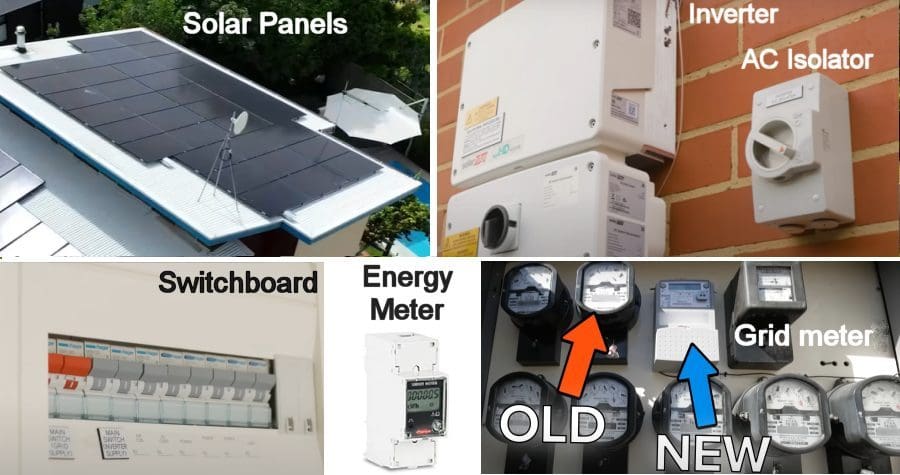
Solar panels
The stars of the show, solar panels turn sunlight into electricity. Basically, electricity is electrons moving in a circuit. To get electrons moving in a solar panel involves what’s called the PV effect, where sunlight knocks electrons loose from the silicon in the panel’s many solar cells.
The faint horizontal lines (metal fingers) on a solar cell collect the moving electrons, which are fed into the thicker vertical lines called bus bars. That movement is then captured as Direct Current (DC) electricity that flows from the panel to the inverter.
There’s a dizzying array of solar panels available in Australia. Discover how to choose the best solar panels for your home.
Solar inverter
The inverter is the brains (and brawn) of the operation. A solar inverter takes the DC electricity from the panels and turns it into 230 Volt Alternating Current (AC) power used by appliances in your home. Learn more about solar inverters.
AC isolator
This is a switch that cuts off the power from your inverter. Always turn the AC isolator switch off first if you need to shut down your system – it’s the safest way to do it.
Switchboard
The switchboard is where everything connects. A circuit breaker for your inverter will be installed here. And something else that should be installed in the switchboard…
Energy (aka consumption) meter/monitor
A good installer will add a consumption monitor to your switchboard so you can see how much electricity your home is using, how much solar energy is contributing and how much is being drawn from the grid. While it’s a very small device, if your switchboard doesn’t have space for it, a switchboard upgrade will be needed and that can get costly (at least $1,200).
Grid meter
Your electricity retailer either installs a new meter after your panels have been installed or updates software on the existing one. Just like the old meter, the new one will still measure how much electricity you pull from the grid, but also how much surplus solar electricity you’re exporting to the grid to credit your bill with a feed-in tariff.
But be aware, solar feed in tariffs are generally stingy these days. Most of your solar savings will come from a reduction in consuming electricity from the mains grid.
Important: Power Vs. Energy
One of the most often confused aspects of solar is power vs. energy — and they are very different. Using the analogy of a car:
- Power is measured in kilowatts (kW). It’s the ‘top speed’ of your solar power system.
- Energy is measured in kilowatt hours (kWh). Think of it as being like your car’s odometer. When your bill says you’ve used X number of kilowatt-hours of electricity, that’s like saying you’ve driven X kilometres.
But just like you’ll probably never hit the maximum speed of your car, you’re unlikely to hit the maximum power of your solar system for two main reasons.
First, using the example of a system with 13 kW of panels, most will have a 10 kW inverter — so that’s your speed limit. Second, you’ll only hit peak power on a clear, mild day (usually in spring) for a few hours. The following graph demonstrates the output of a 13 kW system with a 10 kW inverter on a day with ideal conditions for solar energy generation.
Even if you had a 13 kW inverter, you’re unlikely to ever hit that as your panels get dirty, there’s always some power loss in the wiring, inverters aren’t 100% efficient, panels degrade slowly over time, and panels lose some efficiency in the heat (and it doesn’t have to be particularly hot). Most systems only achieve about 80% of what’s on the box.
Learn more about power vs energy.
Calculating How Much Energy Your System Will Produce
A very quick and dirty way to estimate the daily average output of your solar power system over a year is very simple. 4 is the magic number:
System size (kW) x 4
So, a 13 kW system will produce around 52 kilowatt hours a day on average. Bear in mind it will be much more on summer days due to longer sun-hours, and much less in winter. Also note the magic number is for a system with north facing panels. If you have panels facing east or west, knock off about 15%. If the panels are south-facing, you’ll lose about 30%. The magic number also varies depending on geographic location – for Perth and Darwin it’s 4.6, while down in Hobart it’s 3.2.
Another easy but more accurate way to determine what a system will generate is with SolarQuotes’ solar calculator. It will provide a daily average, annual total and figures for each month; plus other very useful details including estimated simple payback.
Electricity Bill Confusion
Also a very common point of confusion for new solar owners is when they receive their first electricity bill after installing panels. It’s not unusual for SolarQuotes to get emails like this:
Again, solar saves you money in two ways:
- Avoiding mains grid consumption — this is by far the biggest saver.
- The solar feed-in tariff, which is usually a pittance these days.
Savings indicated on your electricity bill are *only* for the feed-in tariff. What you can’t see on the bill is all the money you save by not buying power from the grid. Your electricity company can only ‘see’ what’s going in and coming out of your house, not what’s happening inside. And that’s exactly why it’s so important to have a consumption monitor. You’ll be able to determine what you’re using and exporting through your inverter’s app.
SolarQuotes founder Finn Peacock urges:
“Don’t buy solar without a consumption monitor. And don’t let the installer leave until she’s shown you the app is working and exactly how to use it.”
This article and the video above are a summary of the full Understanding Solar ‘101’ guide available here. There are two other guides in this series focused on buying and owning solar power systems, and you can read all Finn’s solar, battery and EV charging 101 guides here.

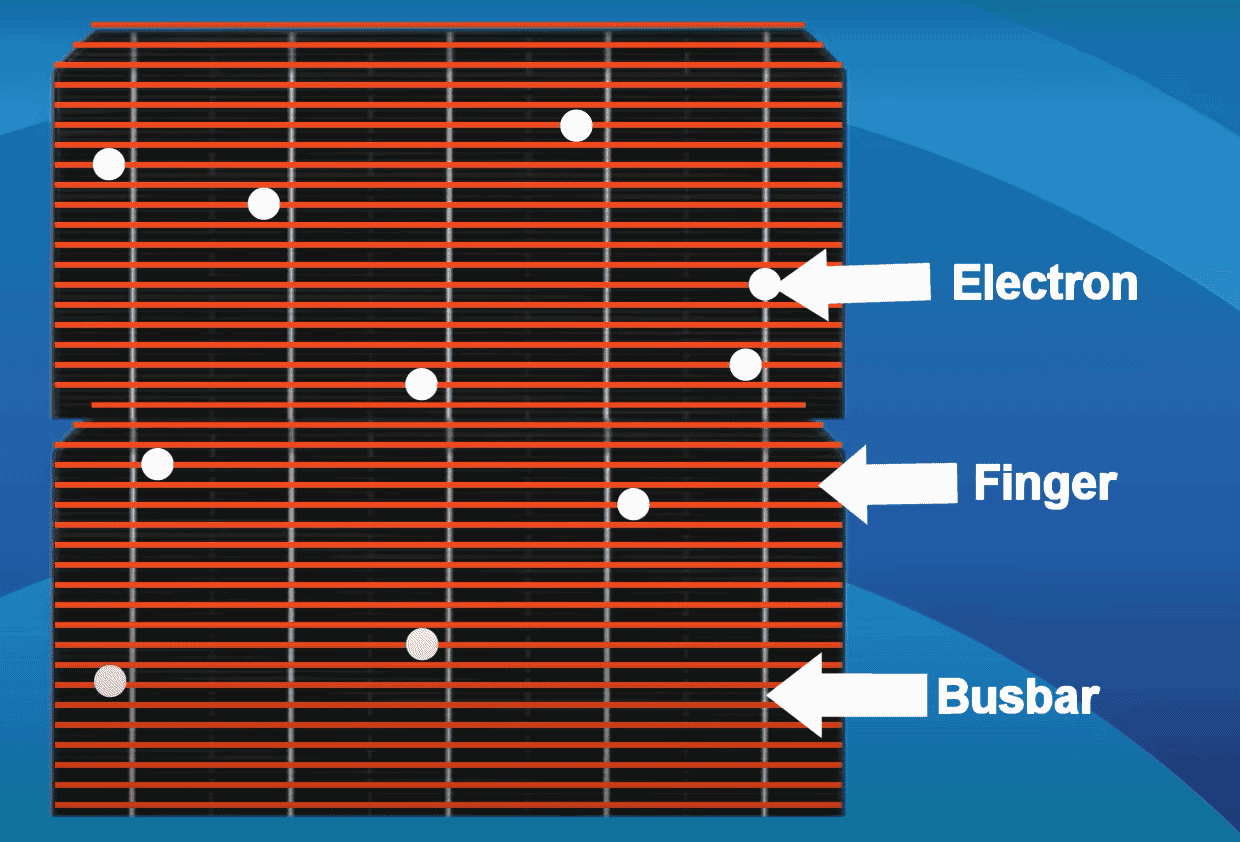

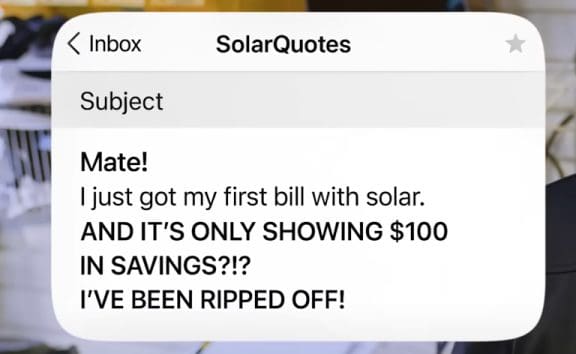
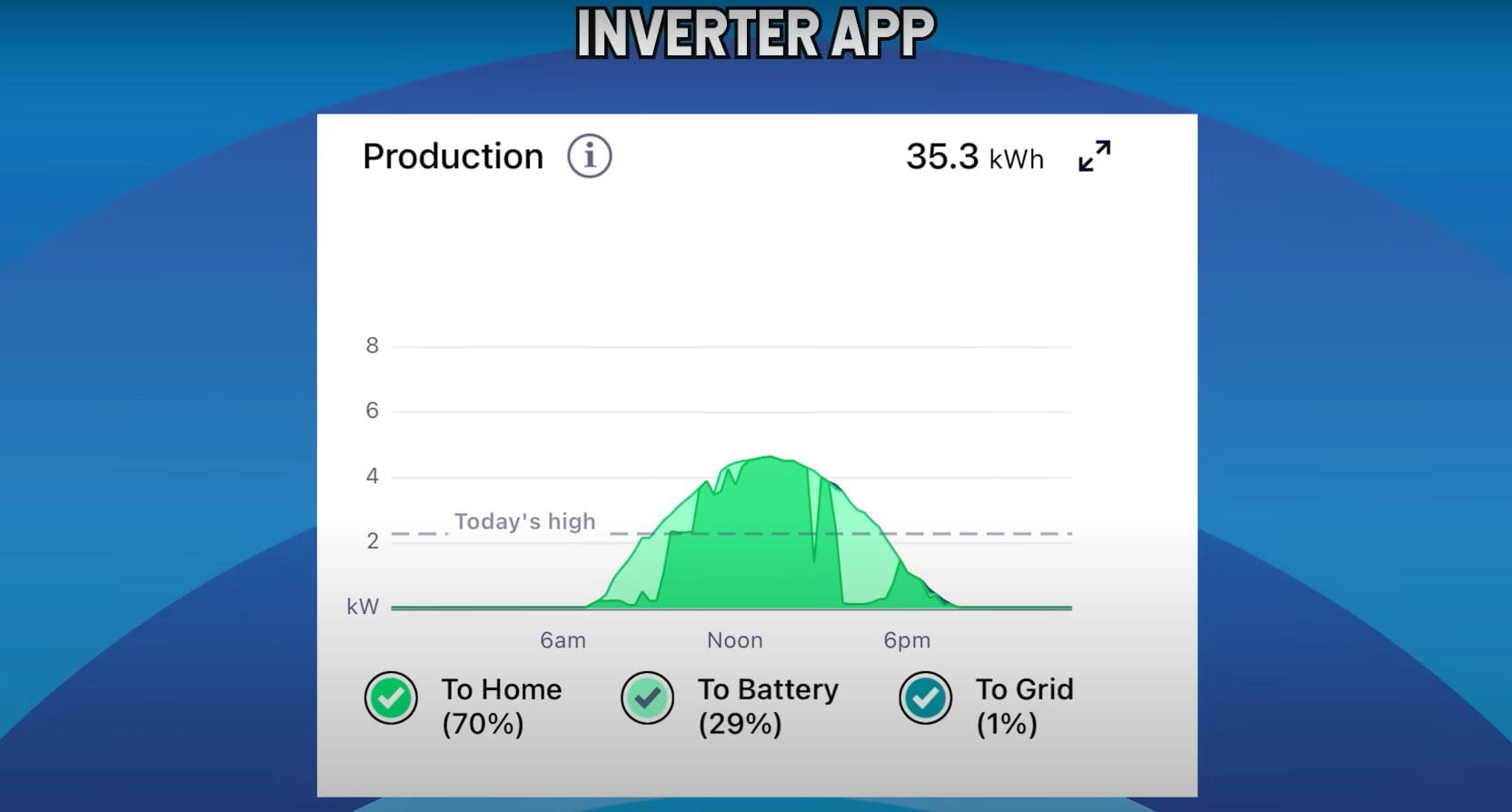
 RSS - Posts
RSS - Posts


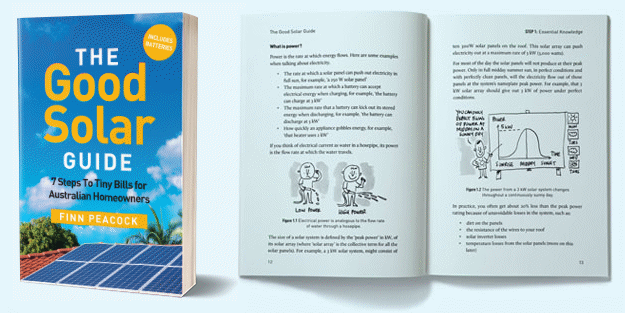
Speak Your Mind